How to Receive WhatsApp Messages in Python using Django and Twilio
Time to read:
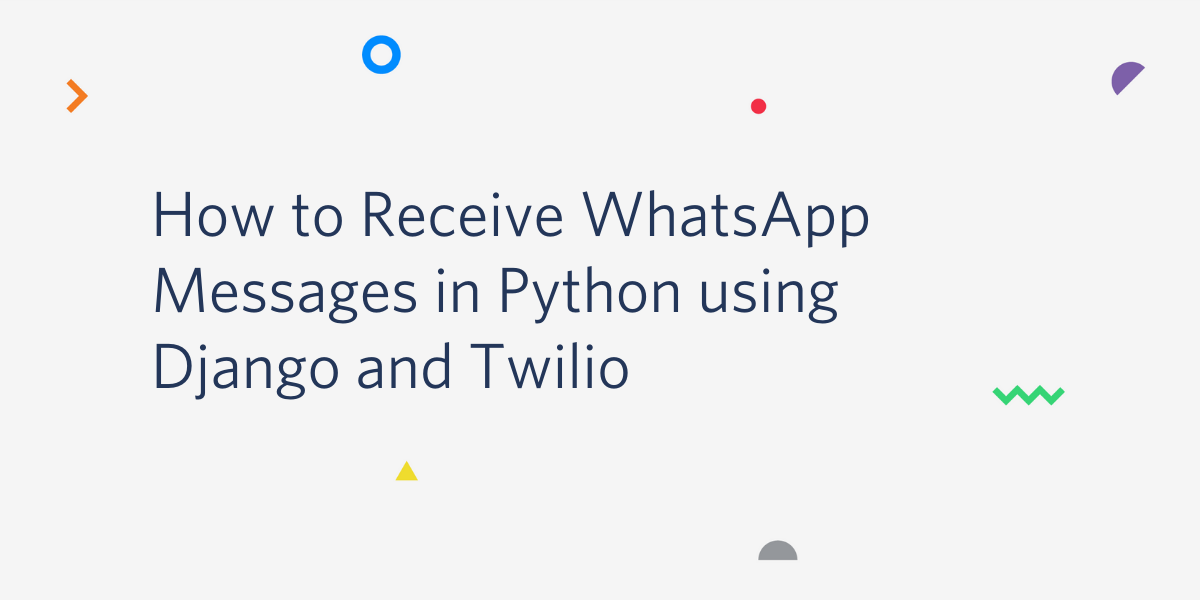
The WhatsApp Business API from Twilio is a powerful, yet easy to use service that allows you to communicate with your users on the popular messaging app. In this tutorial you are going to learn how to create a Python application based on the Django web framework that can receive and handle WhatsApp messages.

Prerequisites
To follow this tutorial you need the following items:
- Python 3.6 or newer. If your operating system does not provide a Python interpreter, you can go to python.org to download an installer.
- A Twilio account. If you are new to Twilio click here to create a free account now and receive $10 credit when you upgrade to a paid account. You can review the features and limitations of a free Twilio account.
- A smartphone with an active WhatsApp account, to test the project.
The Twilio WhatsApp sandbox
Twilio provides a WhatsApp sandbox, where you can easily develop and test your application. Once your application is complete you can request production access for your Twilio phone number, which requires approval by WhatsApp.
In this section you are going to connect your smartphone to the sandbox. From your Twilio Console, select Messaging, then click on “Try it Out”. Choose the WhatsApp section on the left hand sidebar. The WhatsApp sandbox page will show you the sandbox number assigned to your account, and a join code.
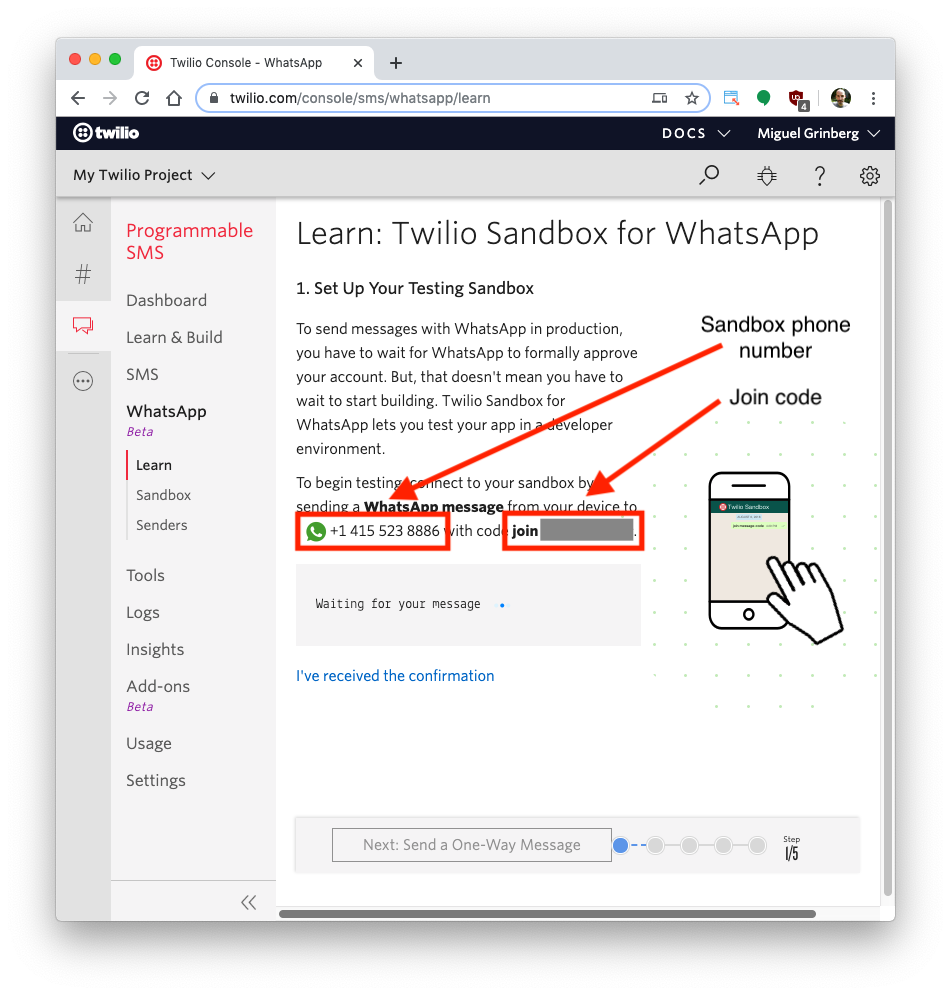
To enable the WhatsApp sandbox for your smartphone, send a WhatsApp message with the given code to the number assigned to your account. The code is going to begin with the word "join", followed by a randomly generated two-word phrase. Shortly after you send the message you should receive a reply from Twilio indicating that your mobile number is connected to the sandbox and can start sending and receiving messages.
If you intend to test your application with additional smartphones, then you must repeat the sandbox registration process with each of them.
Project setup
In this section you are going to set up a brand new Django project. To keep things nicely organized, open a terminal or command prompt, find a suitable place and create a new directory where the project you are about to create will live:
Creating a virtual environment
Following Python best practices, you are now going to create a virtual environment, where you are going to install the Python dependencies needed for this project.
If you are using a Unix or Mac OS system, open a terminal and enter the following commands to create and activate your virtual environment:
If you are following the tutorial on Windows, enter the following commands in a command prompt window:
Now you are ready to install the Python dependencies used by this project:
The three Python packages that are needed by this project are:
- The Django framework, to create the web application.
- The Twilio Python Helper library, to work with SMS messages.
- Pyngrok, to make the Django application temporarily accessible on the Internet for testing via the ngrok utility.
Creating a Django project
In this step you are going to create a brand new Django web application. Enter the following commands in the same terminal you used to create and activate the virtual environment:
The first command above creates a Django project called messages. You will see a subdirectory with that name created in the top-level directory of your project. The next command defines a Django application called whatsapp. After you run this second command you will also see a subdirectory with that name added to the project. This is the application in which you will build the logic to converse with users over WhatsApp.
The migrate command performs the default Django database migrations, which are necessary to fully set up the Django project. The runserver command starts the Django development web server.
In general you will want to leave the Django web server running while you write code, because it automatically detects code changes and restarts to incorporate them. So leave this terminal window alone and open a second terminal to continue with the tutorial.
Starting an ngrok tunnel
The Django web server is only available locally inside your computer, which means that it cannot be accessed over the Internet. To be able to connect with WhatsApp, Twilio needs to be able to send web requests to this server. Thus during development, a trick is necessary to make the local server available on the Internet.
On your second terminal window, activate the virtual environment and then run the following command:
The ngrok screen should look as follows:
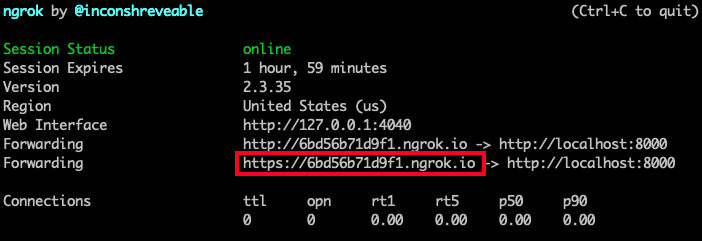
Note the https:// forwarding URL. This URL is temporarily mapped to your Django web server, and can be accessed from anywhere in the world. Any requests that arrive on it will be transparently forwarded to your server by the ngrok service. The URL is active for as long as you keep ngrok running, or until the ngrok session expires. Each time ngrok is launched a new randomly generated URL will be mapped to the local server.
Open the file settings.py from the messages directory in your text editor or IDE. Find the line that has the ALLOWED_HOSTS variable and change it as follows:
This will tell Django that requests received from ngrok URLs are allowed.
While still running the Django server and ngrok on two separate terminals, type https://xxxxxx.ngrok.io on the address bar of your web browser to confirm that your Django project is up and running. Replace xxxxx with the randomly generated subdomain from your ngrok session. This is what you should see:
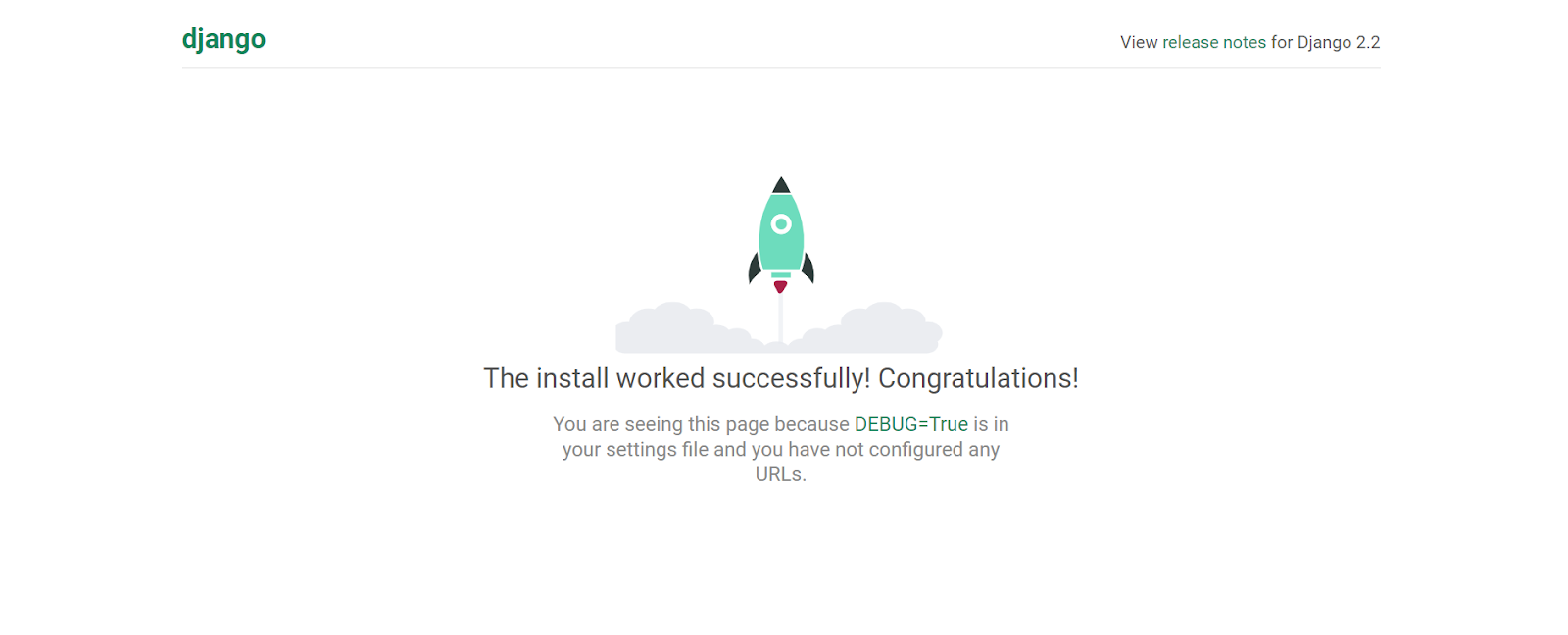
Leave the Django server and ngrok running while you continue working on the tutorial. If your ngrok session expires, stop it by pressing Ctrl-C, and start it again to begin a new session. Remember that each time you restart ngrok the public URL will change.
Creating a WhatsApp webhook
Twilio uses the concept of webhooks to enable your application to perform custom actions as a result of external events such as receiving a message from a user on WhatsApp. A webhook is nothing more than an HTTP endpoint that Twilio invokes with information about the event. The response returned to Twilio provides instructions on how to handle the event.
The webhook for an incoming WhatsApp message will include information such as the phone number of the user and the text of the message. In the response, the application can provide a response to send back to the user. The actions that you want Twilio to take in response to an incoming event have to be given in a custom language defined by Twilio that is based on XML and is called TwiML.
Adding a new endpoint
Open the settings.py file from the messages directory once again. Find the INSTALLED_APPS variable. This is a list of several strings, which are standard modules of the Django framework. At the end of the list, you need to add one more entry to register the whatsapp application that you created earlier.
Open the views.py from the whatsapp subdirectory. This is where you are going to create the endpoint that will handle the incoming WhatsApp messages. Replace the contents of this file with the following:
The message() function is the endpoint function that will run when Twilio notifies the application of an incoming WhatsApp message. For now this function returns a simple response with the text “Hello!”.
To make this endpoint accessible through the web application, a URL needs to be assigned to it. Open the urls.py file from the messages directory and add a new entry to the urlpatterns list as shown below:
The path(‘message’, views.message) line tells Django that the message() function from views.py is mapped to a /message URL on the web application.
To confirm that everything is working, go back to your web browser, and append /message to the ngrok URL you tested earlier. You should see the “Hello!” message that the endpoint returns in the page.
Receiving WhatsApp messages
The next step is to update the logic inside the message() endpoint to extract the information about the incoming message. Replace the contents of the views.py file in the whatsapp subdirectory with the following:
Twilio will invoke the webhook as a POST request, and it will pass information about the message as form variables, which can be retrieved in Django from the request.POST dictionary. The two most interesting values that are provided are the phone number of the user and the text of the message, in the From and Body fields respectively.
This short example application extracts these two values and then prints them to the console.
Sending a response
To complete the webhook you will now update the response of the endpoint to return TwiML. The twilio package that is installed in the virtual environment provides helper classes that simplify the generation of these responses.
Update the views.py file in the whatsapp subdirectory one last time with the following code:
This updated implementation of the endpoint uses the MessagingResponse class from the twilio package to build the response that goes back to the user. The message() method of this class instructs Twilio to respond to the user with the message given as an argument.
Configuring the WhatsApp webhook
To connect the webhook with WhatsApp you need to configure its URL in the Twilio console. Locate the WhatsApp sandbox settings page and edit the “When a message comes in” field with the URL of your webhook. This is going to be the temporary ngrok URL with /message appended at the end. You can see an example below:
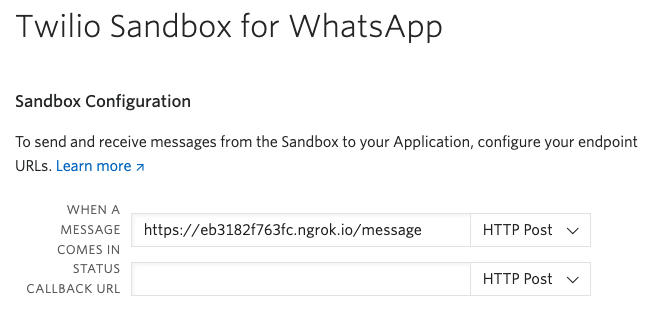
Make sure the dropdown to the right of the URL field is set to “HTTP Post”, and don’t forget to click the “Save” button at the bottom of the page to record these changes.
Testing your WhatsApp messaging service
And now the moment of truth! Make sure the Django server and ngrok are still running. From your smartphone, send a message to the sandbox number. After a short moment you should see a response.

If you look in the terminal that is running the Django server you should see that the message and your phone number were received and printed:

Note that when using WhatsApp in the Twilio messaging APIs, all phone numbers have a whatsapp: prefix.
Next steps
I hope you found this tutorial useful. Now that you learned how to receive and reply to messages on WhatsApp, you may want to take on a slightly more challenging project. If that’s the case, head over to the build a WhatsApp chatbot tutorial.
I’d love to see what you build with WhatsApp and Twilio!
Miguel Grinberg is a Python Developer for Technical Content at Twilio. Reach out to him at mgrinberg [at] twilio [dot] com if you have a cool Python project you’d like to share on this blog!
Related Posts
Related Resources
Twilio Docs
From APIs to SDKs to sample apps
API reference documentation, SDKs, helper libraries, quickstarts, and tutorials for your language and platform.
Resource Center
The latest ebooks, industry reports, and webinars
Learn from customer engagement experts to improve your own communication.
Ahoy
Twilio's developer community hub
Best practices, code samples, and inspiration to build communications and digital engagement experiences.


